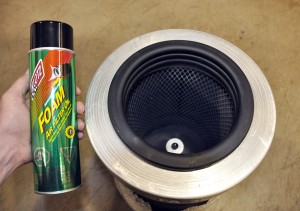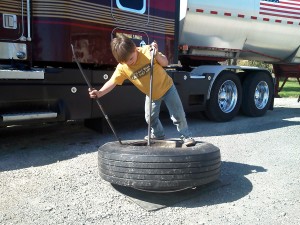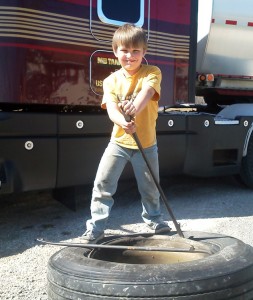 At Pittsburgh Power, we approach our work with a deep-seeded perspective on what an engine needs to perform well. While extremely complex solutions sometimes are necessary, an engine’s needs are not – an engine needs adequate amounts of air, fuel and exhaust flow. We work hard to get your engine all of what it needs to run as powerful and efficient as possible. Customer service is important to us, and we strive to be helpful and knowledgeable, but quality parts are just as important, so we use (or make) nothing but the best. Let’s look at some of the quality products we use to get the air flowing freely through your engine for optimal performance.
At Pittsburgh Power, we approach our work with a deep-seeded perspective on what an engine needs to perform well. While extremely complex solutions sometimes are necessary, an engine’s needs are not – an engine needs adequate amounts of air, fuel and exhaust flow. We work hard to get your engine all of what it needs to run as powerful and efficient as possible. Customer service is important to us, and we strive to be helpful and knowledgeable, but quality parts are just as important, so we use (or make) nothing but the best. Let’s look at some of the quality products we use to get the air flowing freely through your engine for optimal performance.
In regards to filtration, we use Fleet-Air filters to increase your engine’s supply of clean air. These Fleet-Air filters are washable (with soap and water) and utilize modern “open-cell” foam technology. The traditional paper-based filters, even when new, do not flow as much air, and as they fill with debris and are exposed to humidity, they become increasingly less effective. In order for diesel fuel to burn optimally, you need an air/fuel ratio of 40-1 (40 lbs. of air to 1 lb. of fuel). That’s the equivalent of 15,000 gallons of air to burn one gallon of fuel (fuel weighs much more than air). This makes it easy to understand why having a clogged-up air filter is bad for performance and efficiency. Cleaning paper filters is also a challenge because water can’t be used and compressed air easily tears the paper. Coating the interior of the Fleet-Air filter with synthetic spray oil makes for a great combination, giving it the ability to grab every last particle (see photo). So, the next time you need an air filter for your truck, think about a Fleet-Air filter. You will never have to buy another one again, and you will gain 1/4 mpg.
 So, now that we are getting the air into the engine, we need to get the exhaust out. Having an exhaust manifold that is up to the task is very important for getting all of that air out of your engine. A chain is only as strong as its weakest link, and inside your engine, the exhaust system is often that weakest point. The system is only as effective as its most narrow point, and the straighter it is, the better it is. When we design an exhaust manifold, it is cast to flow 20% more exhaust. Then, we remove the air turbulence on the flow bench. After that, we ceramic coat the manifold to keep the exhaust flowing to the turbocharger (instead of soaking into the manifold) for longer life and better flow. Now, the engine will gain another 1/4 mpg, the exhaust gas temperature (EGT) will decrease by 125 degrees, and the turbo will spool up quicker, making for a much more pleasant driving experience. Yes, these manifolds are expensive, but with a 1/4 mpg savings on fuel, you will burn 1,500 gallons less in 150,000 miles of driving. At $4.00 per gallon, that is a savings of $6,000 with a mere $1,500 to $1,650 investment.
So, now that we are getting the air into the engine, we need to get the exhaust out. Having an exhaust manifold that is up to the task is very important for getting all of that air out of your engine. A chain is only as strong as its weakest link, and inside your engine, the exhaust system is often that weakest point. The system is only as effective as its most narrow point, and the straighter it is, the better it is. When we design an exhaust manifold, it is cast to flow 20% more exhaust. Then, we remove the air turbulence on the flow bench. After that, we ceramic coat the manifold to keep the exhaust flowing to the turbocharger (instead of soaking into the manifold) for longer life and better flow. Now, the engine will gain another 1/4 mpg, the exhaust gas temperature (EGT) will decrease by 125 degrees, and the turbo will spool up quicker, making for a much more pleasant driving experience. Yes, these manifolds are expensive, but with a 1/4 mpg savings on fuel, you will burn 1,500 gallons less in 150,000 miles of driving. At $4.00 per gallon, that is a savings of $6,000 with a mere $1,500 to $1,650 investment.
When OEMs design their manifolds, they engineer them to work on their stock, sluggish, inefficient engines. Therefore, once you start making changes to increase the performance and mileage, a stock manifold quickly becomes a source of back pressure for the engine. Rewind to 1982 – back when Cummins designed the pulse manifold. Back then, the majority of their fleet engines were about 350 hp. They designed their manifolds to flow the optimal amount of air for 350 hp, which was “marginal” at best for truckers with 400 or more horsepower. With this in mind, think of a 550 to 600 hp engine today. These manifolds were designed to service 435-460 hp stock engines, so they are marginal at best for a 550-600 hp engine – in fact, let’s call it FAR from optimal. When our team casts a new manifold or ports an existing stock manifold, we always shoot for 20% more flow. Once you get the manifold flowing nicely, you might want to think about getting a larger turbo. And, last but not least, a straight-through muffler is a must – otherwise, all that work being done to get the exhaust out of the engine is lost when it hits that restricted muffler.
 On a lighter note, Bryan Gadfield, a customer from Butler, Ohio, recently wrote me a letter. In it, he had this to say about his young son: “My son Tony is an excellent student in 1st grade. Because I am a truck driver, he tries to spend time with me when I am home by helping me with repairs/maintenance on my semi. He helps me with washing, polishing, greasing, brakes and tire changing – he can even work the spoons and mount and dismount a tire with a minimal amount of my help (see photos). I pay him a little money as an incentive and to show appreciation for his efforts. Tony plays soccer and wrestles when he’s not working or in school, and wants to play football when he gets older. He says he wants to be a truck driver when he grows up because he thinks we get paid a lot (ha ha). We are proud of him and his willingness to work.” Sounds to me like the TV and video games will have to wait – this kid has his priorities straight!
On a lighter note, Bryan Gadfield, a customer from Butler, Ohio, recently wrote me a letter. In it, he had this to say about his young son: “My son Tony is an excellent student in 1st grade. Because I am a truck driver, he tries to spend time with me when I am home by helping me with repairs/maintenance on my semi. He helps me with washing, polishing, greasing, brakes and tire changing – he can even work the spoons and mount and dismount a tire with a minimal amount of my help (see photos). I pay him a little money as an incentive and to show appreciation for his efforts. Tony plays soccer and wrestles when he’s not working or in school, and wants to play football when he gets older. He says he wants to be a truck driver when he grows up because he thinks we get paid a lot (ha ha). We are proud of him and his willingness to work.” Sounds to me like the TV and video games will have to wait – this kid has his priorities straight!
It is crucial to get air in and out of your engine, so do everything you can to help make that happen. If you do, you will reap the rewards and have a much better truck to drive. In this case, don’t be afraid to go with the flow! If you have any comments or questions, I can be reached at Pittsburgh Power Inc. in Saxonburg, PA at (724) 360-4080 or via e-mail at bruce@pittsburghpower.com.

1 Comment
I have a 2001 Volvo with a Cummin’s N14, and I saw a 3/4 to 1 mpg increase after switching to a Fleet air filter. The trailer had 20,000 lbs when I made the change from paper filter to the Fleet foam filter, and when I pulled away from the truck stop it felt like I was running empty! The engine runs so much smoother now. I will be trying the filter’s in other trucks soon.